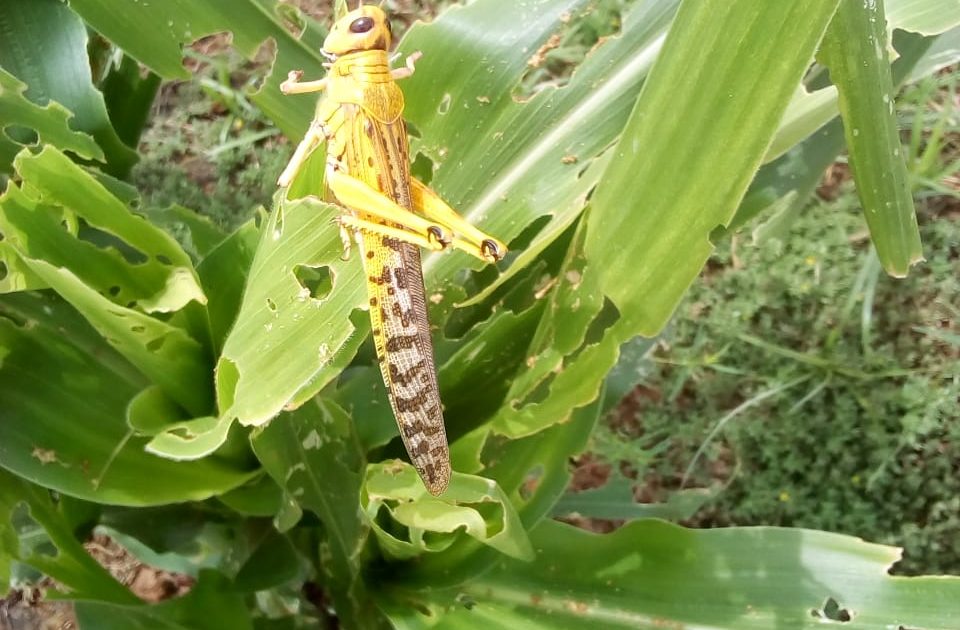Hundreds of families in Chewele and Sala wards in Tana River County are staring at starvation following the invasion of their irrigation farms by the newly hatched wingless nymph’s locusts.
According to the farmers, the deadly pests have already destroyed over 50 acres of irrigated-near- mature maize, water melons, green grams and vegetables farms.
The effects of the locusts are being felt by the pastoralist whose grazing lands that were beaming with plenty of pasture following last year’s heavy rains are slowly being devoured by the locusts.
Addressing the press on Tuesday, Mohamed Ramadhan, one of the farmers from Salah said they expected a bumper harvest this season but their hopes have been dashed by the locusts’ invasion.
Ramadhan said their first crops were devoured by the first swam of locusts which invaded their farms early February and opted to re-plant but again the same predicaments have befallen them.
“This a double tragedy for the farmers. We lost all our crops to last year’s floods. |But as we were about to recover, then came the locusts. We are starring at imminent starvation,” Mohamed said.
“As we speak there are those who have not recovered and are still at the IDP camps. I am pleading with the government and NGOs involved in the locust spraying to come to our aid before were lose our entire crops to the locusts,” he added.
A similar situation is replicated in Karime village where hopes of harvesting green grams now hangs in the balance after the locust invaded the farm and destroyed the crop.
The farmers are now appealing to the government and other development partners for quick interventions, including availing of pesticides and hand pumps to spray the nymphs which at the moment cannot fly.
They said that the entire area that has been food sufficient is faced with severe food shortage if nothing is done to contain the pests.
The county government of Garissa last week dispatched a team of 20 personnel each to Sankuri and Kamuthe areas where locust eggs have fully developed into nymph.
According to the County Agriculture CEC, Mohamed Shale, the exercise was meant to stop the deadly pest from further multiplying and stop further destruction of crops and pastures within the County. The second generation of locusts resulted from the initial invasions in the first week of January this year.
Shale said the county government was determined to stop the pests before they are fully-grown so that they don’t cause more destruction to the fragile environment.
Among the worst affected counties in Kenya are Mandera, Marsabit, Wajir, Isiolo, Meru, and Samburu that have lost over 5000 square kms of green vegetation. The locusts prefer grass based crops such as millet or maize, but also attack other crops such as rice, coffee, vegetables, and fruit.
A locust devours the equivalent of its own weight (2 grams) per day.
By Jacob Songok




